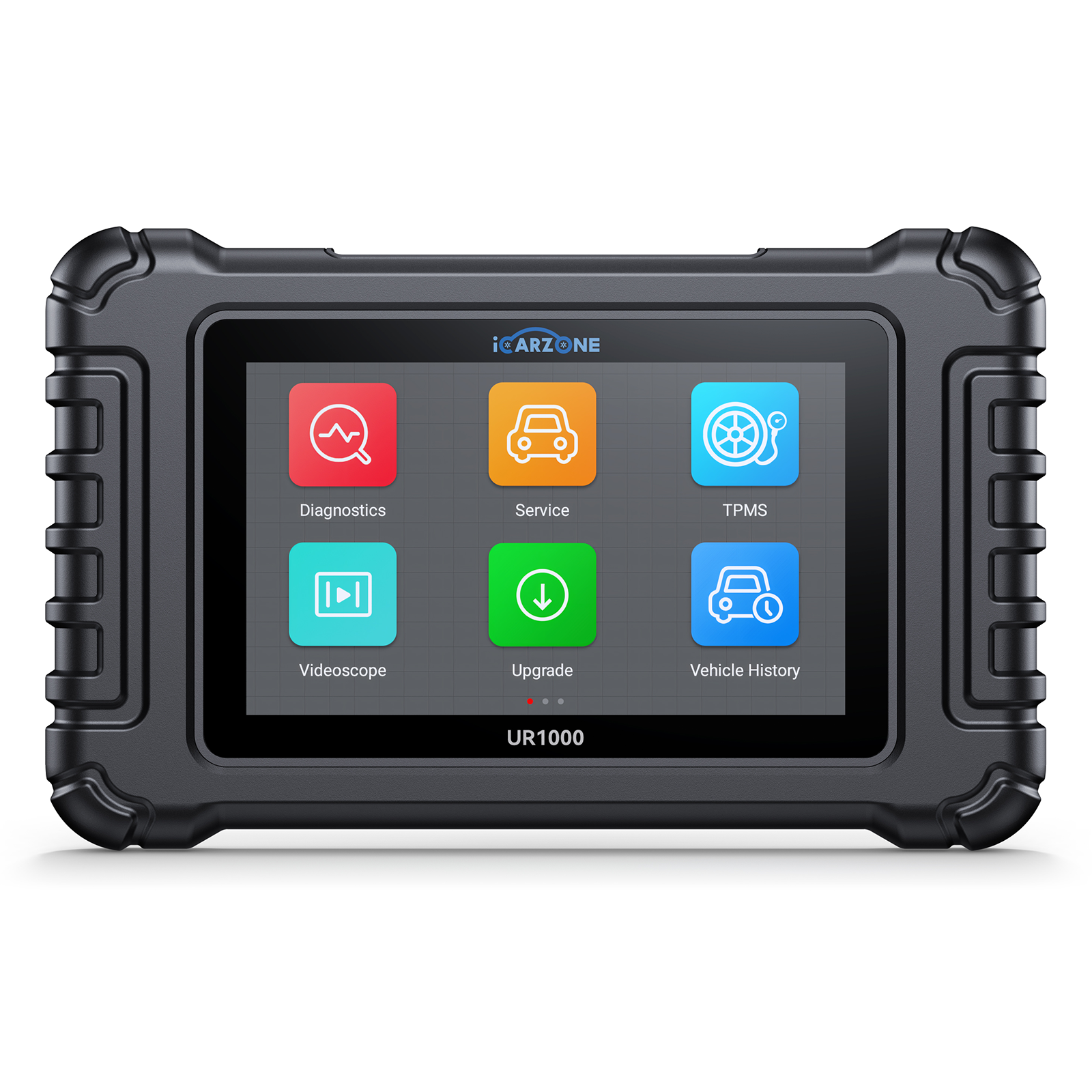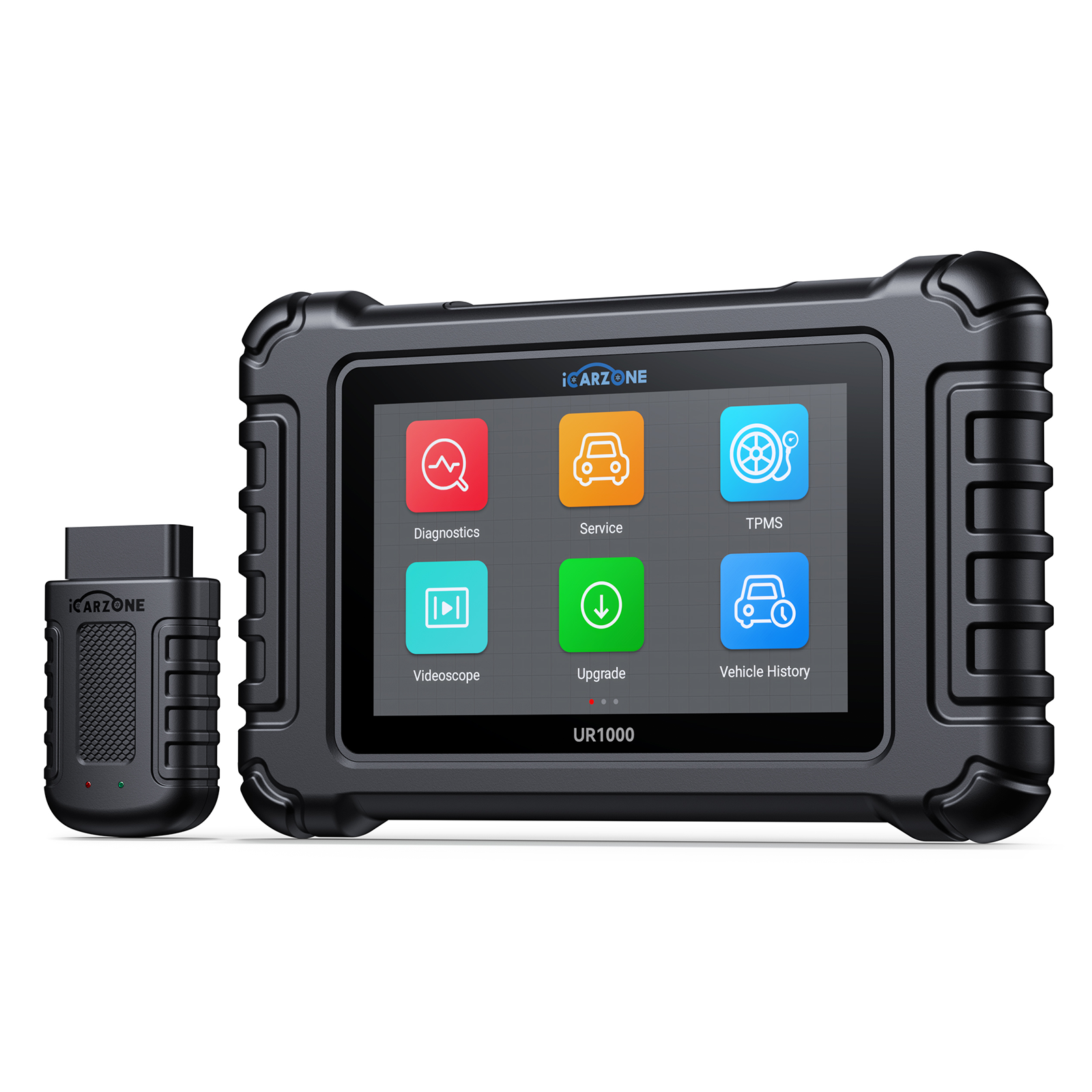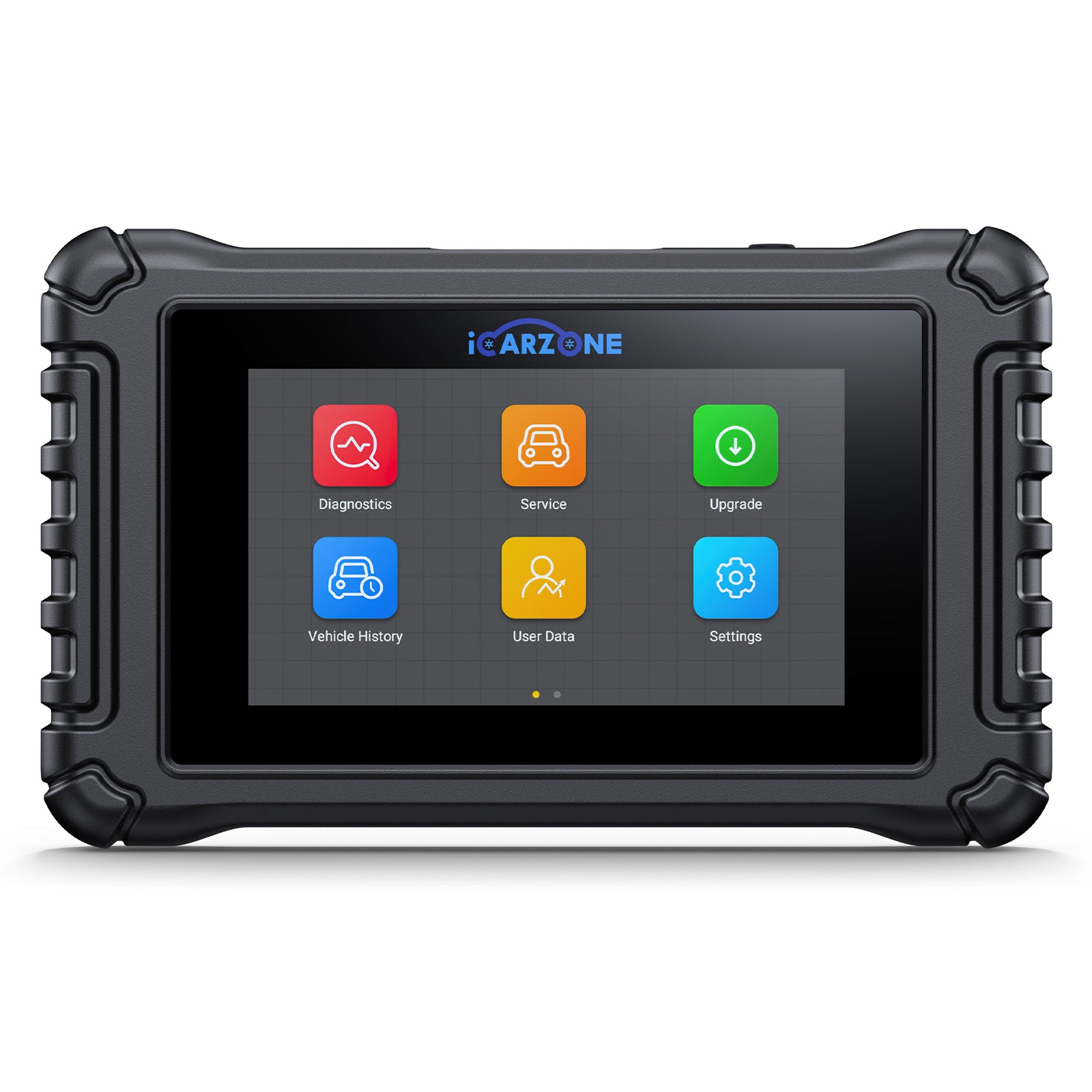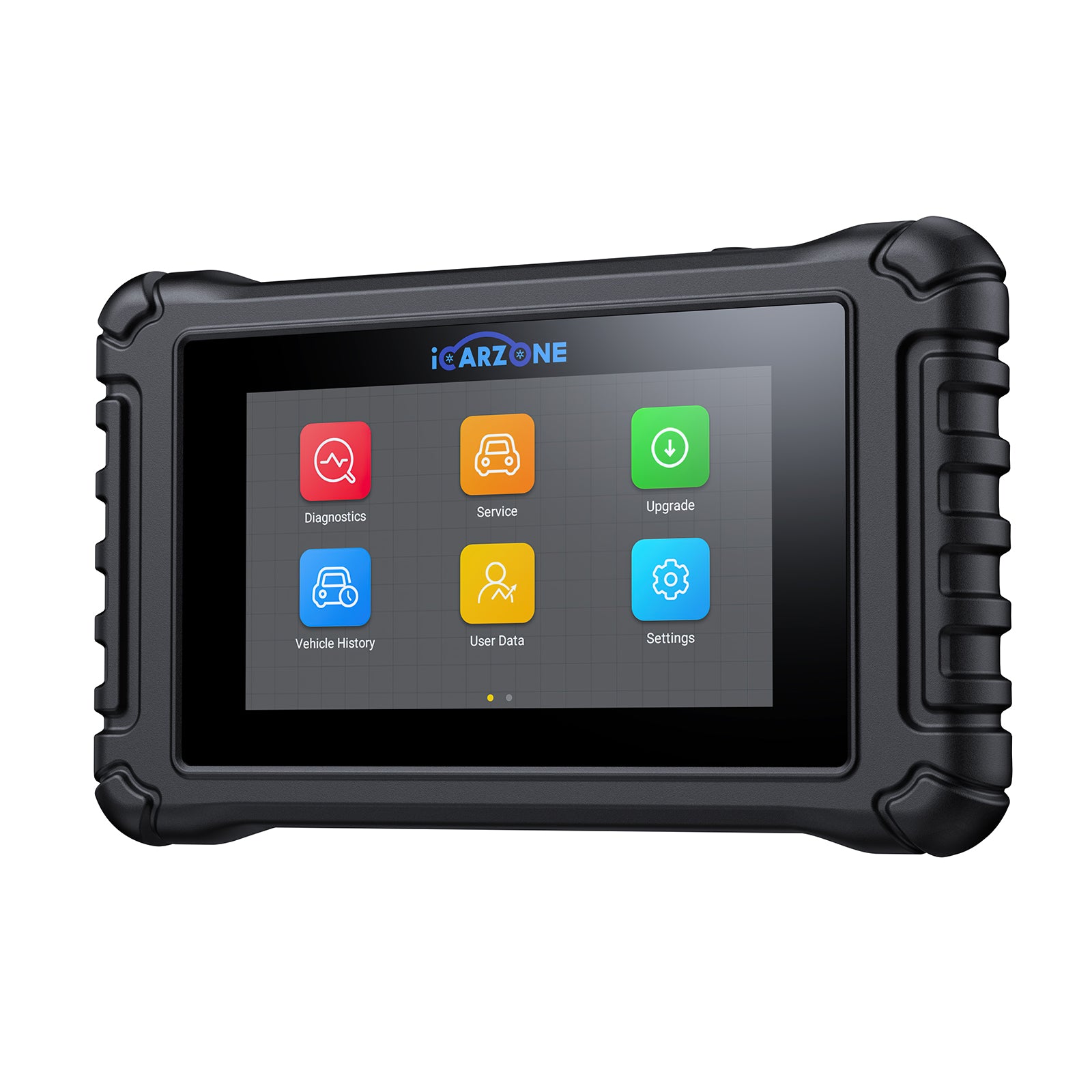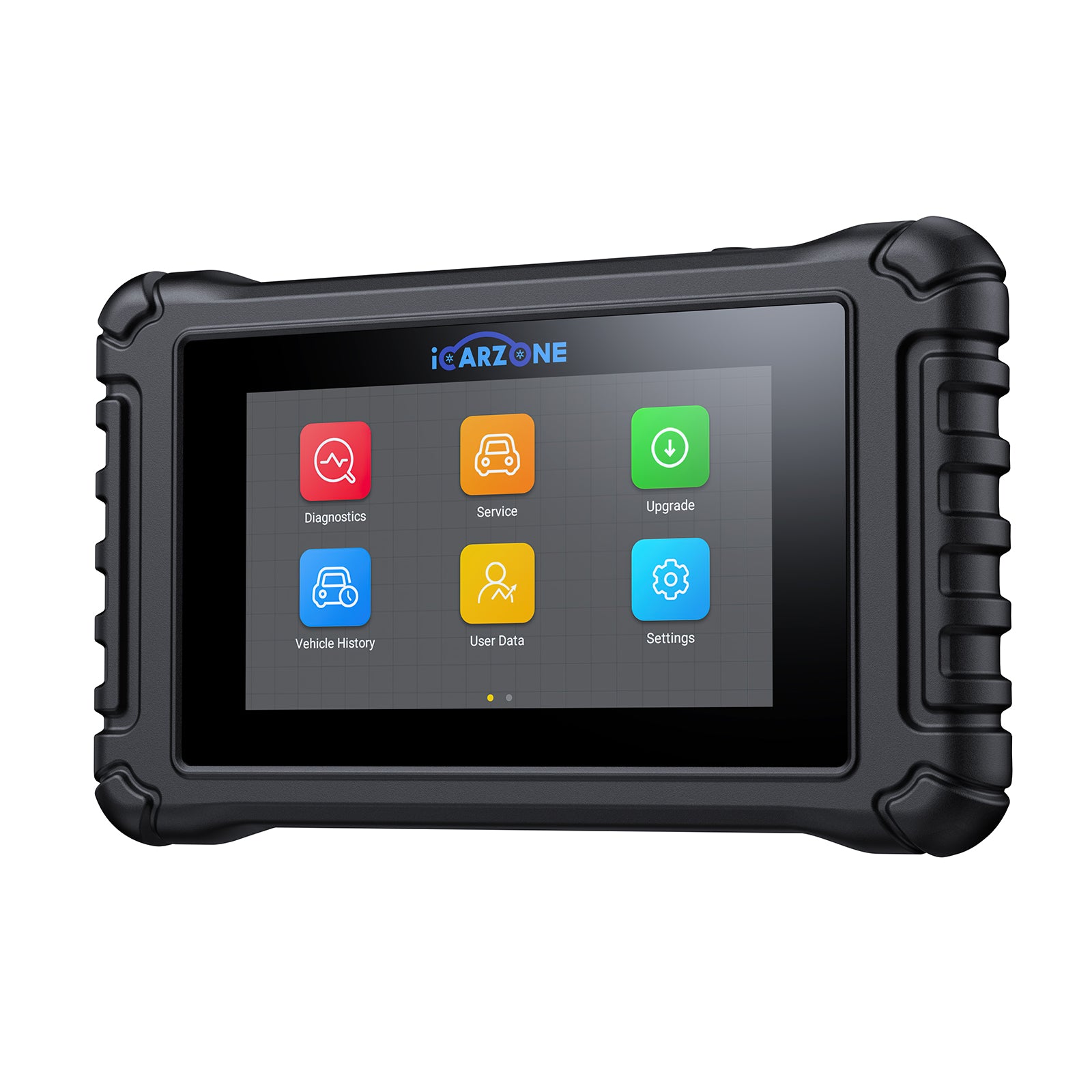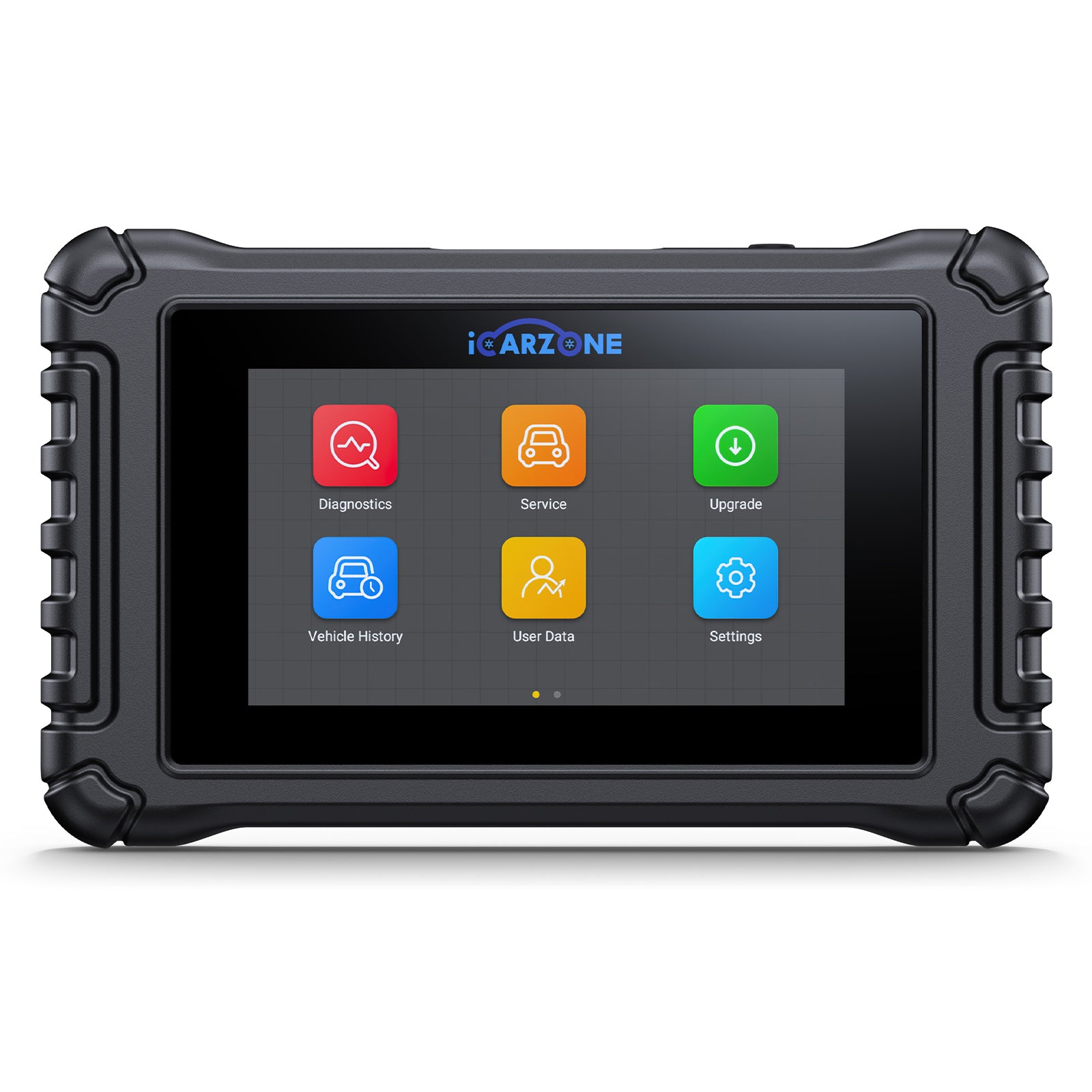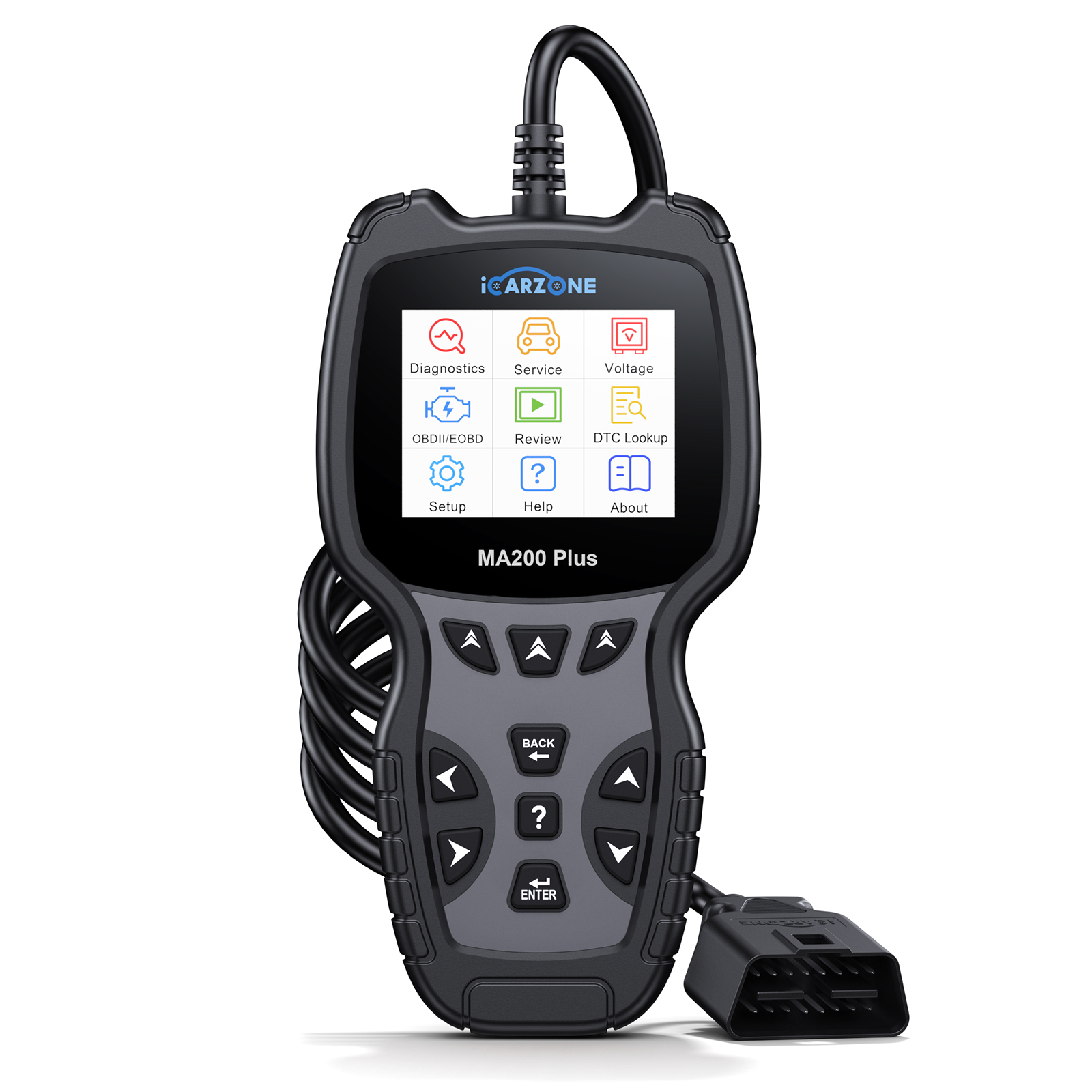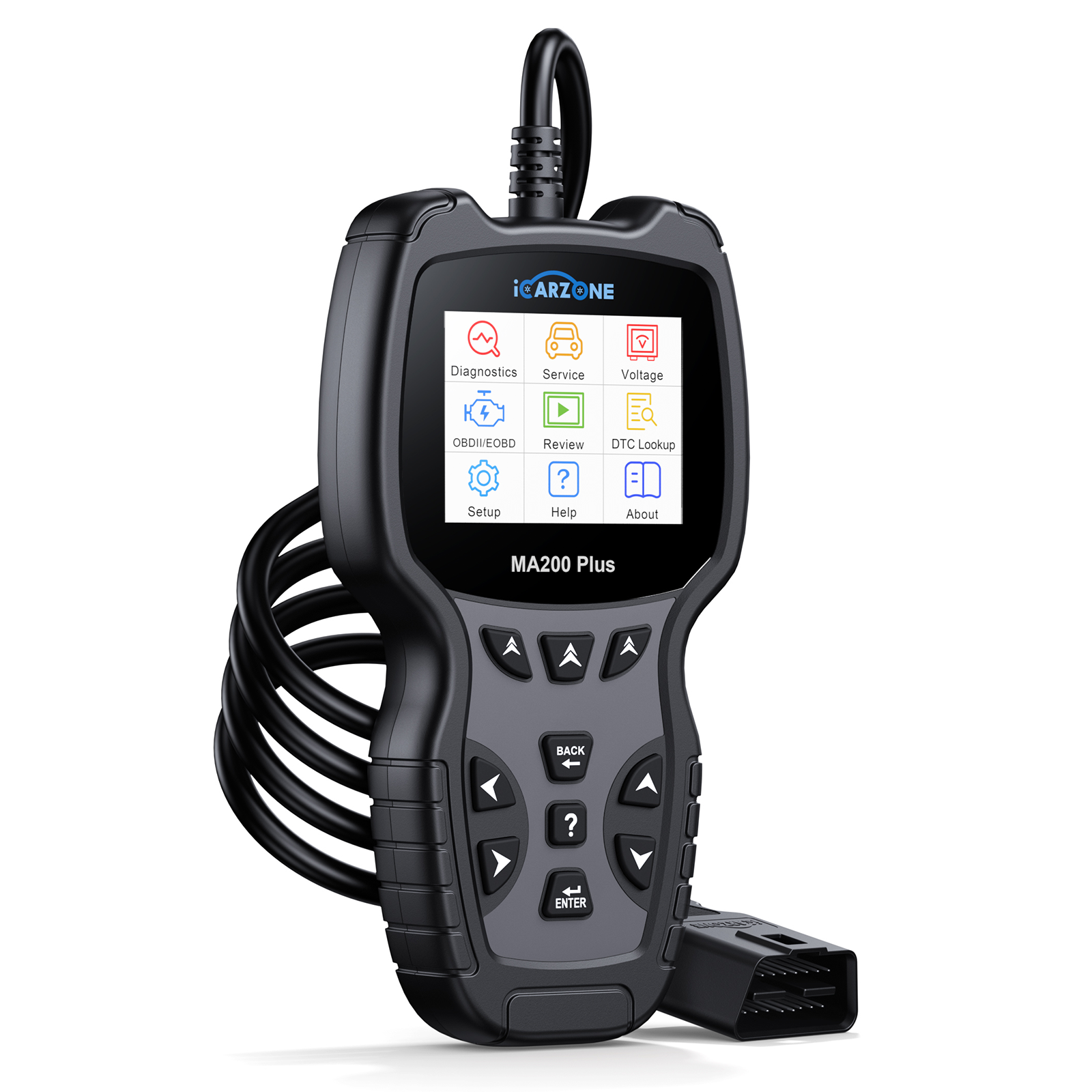P0457 Code in Jeep Wrangler: Fix with ICARZONE MA900
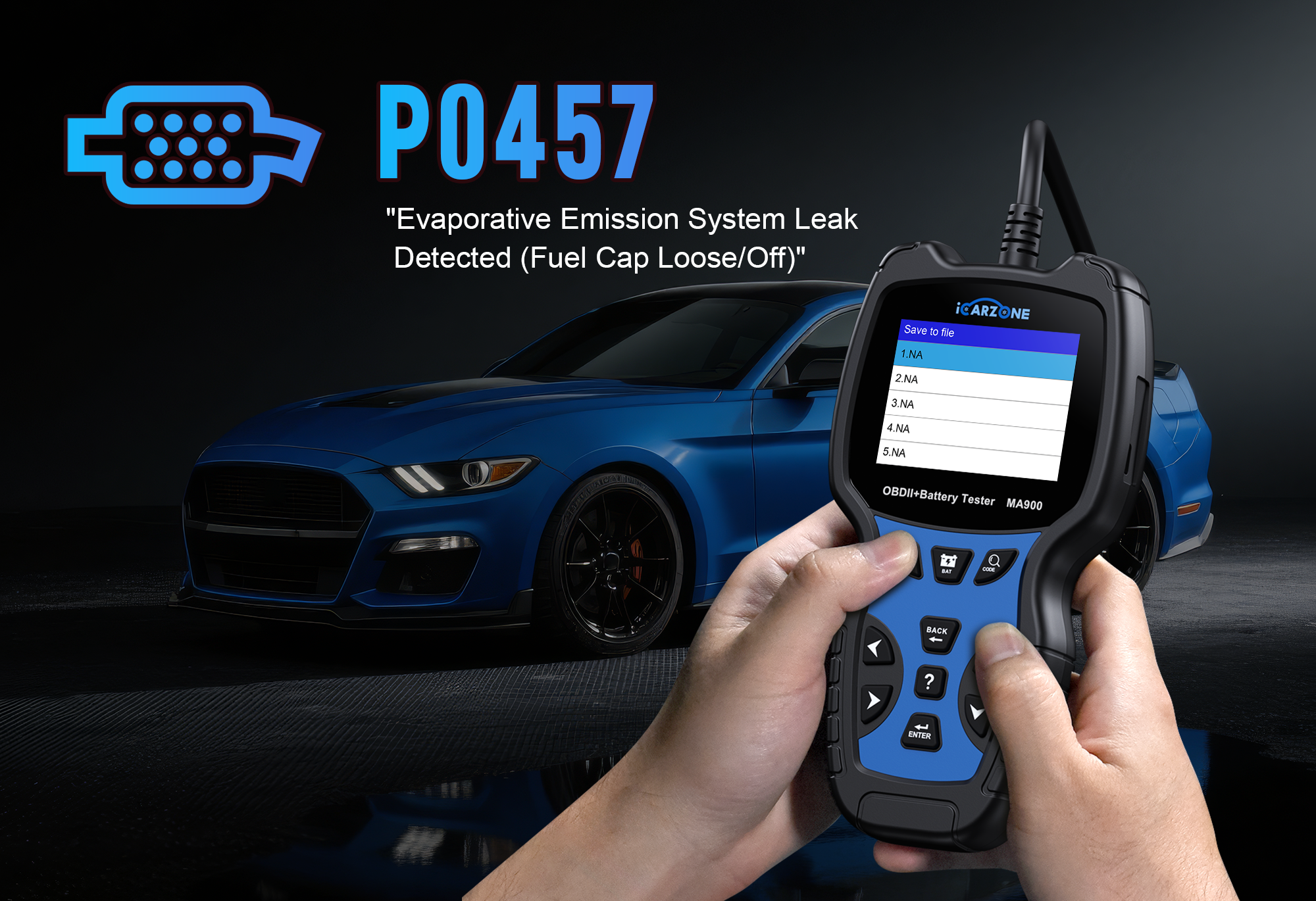
P0457 Code in Jeep Wrangler: Fix with ICARZONE MA900
Solve EVAP system small leak issues in 2018-2024 Wrangler models. Diagnose and repair fuel vapor leaks with MA900's Jeep-specific tools.
Fix P0457 with MA900 Now1. What is P0457 in Jeep Wrangler?
P0457 is an OBD-II Diagnostic Trouble Code indicating an Evaporative Emission Control System Leak Detected (Small Leak). In Jeep Wrangler—one of the most iconic off-road vehicles—this code signals a small leak in the EVAP system that captures and recycles fuel vapors from the gas tank.
The Wrangler's robust EVAP system is specifically engineered to handle off-road conditions while meeting emissions standards. It includes a charcoal canister, purge valve, vent valve, gas cap, and a network of hoses designed to withstand dust, water, and vibration. P0457 specifically indicates a leak smaller than 0.020 inches in this system.

Why P0457 Matters for Wrangler Owners
Jeep designed the Wrangler's EVAP system to balance off-road capability with environmental compliance. A small leak creates several issues:
- Illuminated Check Engine Light that won't reset until the leak is fixed
- Fuel economy reduction of 1-3 MPG due to improper vapor management
- Potential failure of emissions tests in regulated states
- Increased risk of larger leaks developing over time, especially with off-road use
- 2020+ Wrangler models may enter "Emissions Protection Mode" limiting performance
- Water intrusion risk through the leak point during water crossings
2. Common Causes in 2018-2024 Jeep Wrangler
Loose or Damaged Gas Cap (2021 Wrangler Rubicon 3.6L) — A 2021 Rubicon owner with 35,000 miles developed P0457 after off-roading. ICARZONE MA900's Gas Cap Seal Test confirmed a poor seal. Inspection revealed the cap's rubber gasket was damaged by debris during trail use. Replacing with OEM cap #52100355AA resolved the leak.Cracked EVAP Hose (2019 Wrangler Sport S 2.0L Turbo) — A 2019 Sport S owner's P0457 appeared after a desert off-road trip. MA900's Smoke Test Simulation identified a leak in the EVAP vent hose. The hose (located near the rear axle) had rubbed against a bracket, creating a small crack—common in Wranglers with aftermarket suspension lifts.Charcoal Canister Damage (2022 Wrangler Sahara 3.0L EcoDiesel) — A 2022 Sahara owner experienced persistent P0457. MA900's EVAP Leak Size Detection indicated a 0.018" leak. Inspection showed rock damage to the canister while off-roading—the EcoDiesel's larger canister is more exposed than gasoline models.Vent Valve Gasket Failure (2018 Wrangler Unlimited 3.6L) — A 2018 Unlimited owner with 68,000 miles developed P0457. MA900's Vent Valve Integrity Test confirmed a leak at the valve base. The factory gasket had hardened from temperature extremes common in off-road use. Replacing the vent valve assembly (#68227645AA) fixed the issue.Aftermarket Part Issues (2023 Wrangler Willys 2.0L Turbo) — A 2023 Willys owner installed an aftermarket fuel door without proper EVAP compatibility. MA900's System Pressure Test detected a small leak at the gas cap interface. The aftermarket part altered the cap's sealing pressure. Reinstalling OEM components resolved P0457.
3. Key Symptoms in Jeep Wrangler SUVs
Primary Symptoms
- Illuminated Check Engine Light with P0457 stored
- "EVAP System Leak" message on instrument cluster (2020+ models)
- Decreased fuel efficiency, especially during highway driving
- Difficulty refueling (tank clicks off prematurely)
- Fuel odor near rear of vehicle after filling up
Off-Road Specific Indicators
- Check Engine Light illuminates after water crossings
- Symptoms worsen after driving on rough terrain
- Leak detected message appears after fuel tank hits trail obstacles
- Issues develop after installing larger tires or suspension lifts
- Symptoms appear seasonally in regions with extreme temperature changes
4. Wrangler Engines/Trims Prone to P0457
Jeep service data highlights these Wrangler configurations with highest P0457 incidence:
| Engine | Model Years | Wrangler Trims | % of P0457 Cases | Primary Risk Factor |
|---|---|---|---|---|
| 3.6L Pentastar V6 | 2018–2024 | Rubicon, Rubicon 392 | 34% | Off-road use causing EVAP component damage |
| 2.0L Turbocharged I4 | 2018–2024 | Sport, Sport S, Sahara | 29% | Turbo-related pressure fluctuations affecting EVAP system |
| 3.0L EcoDiesel V6 | 2020–2023 | Sahara, Rubicon | 21% | Larger EVAP components more vulnerable to damage |
| 6.4L HEMI V8 | 2021–2024 | Rubicon 392 | 16% | Higher underhood temperatures affecting EVAP hoses |
Critical TSBs for Wrangler P0457:
- Jeep TSB 08-034-20 (2018–2020 Wrangler JL): EVAP hose routing update to prevent rubbing and leaks.
- Jeep TSB 08-023-21 (2021 Wrangler): Revised gas cap design to improve sealing and prevent false P0457 codes.
- Jeep TSB 08-012-22 (2022–2023 Wrangler): Charcoal canister shield installation to prevent off-road damage.
5. Diagnostic Steps with ICARZONE MA900
Diagnosing P0457 in your Wrangler is precise with ICARZONE MA900's Jeep-specific EVAP tools:
| Step | Action with MA900 | Wrangler-Specific Goal | Pass/Fail Criteria |
|---|---|---|---|
| 1 | Full System Scan > Select "Jeep" > "Wrangler" > "Body Control Module" | Confirm P0457 and check for related codes (P0442, P0455, P0456) | Pass: Isolated P0457 | Fail: Multiple EVAP codes (system-wide issue) |
| 2 | EVAP Tests > "Gas Cap Integrity Test" | Check for proper sealing and pressure retention at fuel filler | Pass: Maintains pressure for 60 seconds | Fail: Pressure drops indicating cap issue |
| 3 | EVAP Tests > "Leak Detection Pump Test" |
|
Pass: No leak detected | Fail: Confirms small leak (P0457 cause) |
| 4 | EVAP Tests > "Component Isolation Test" | Isolate leak to specific component (hoses, canister, valves) | Pass: All components hold pressure | Fail: Identifies specific leaking component |
| 5 | Service Functions > "Jeep TSB Lookup" > Enter Wrangler's VIN | Check for applicable technical service bulletins | Pass: No relevant TSB | Fail: TSB applies (follow recommended fix) |
Case Example: A 2020 Wrangler Rubicon 3.6L failed Step 3 (confirmed small leak) and Step 4 (isolated to EVAP hoses). MA900's Leak Location Guidance pointed to the rear axle area. Inspection revealed a cracked vent hose that had rubbed against a suspension component after a trail run—a common issue addressed in TSB 08-034-20. Replacing the hose with the updated, longer version from the TSB and performing MA900's EVAP System Reset resolved P0457. A 50-mile off-road test confirmed the fix held under various conditions.

6. Fixes for Wrangler's P0457
Resolving P0457 in your Wrangler requires EVAP system-specific repairs—here's how to address each root cause with ICARZONE MA900 guidance:
1. Replace or Repair Gas Cap
- Start with the simplest fix: Inspect gas cap for damage to rubber gasket or sealing surfaces.
- Clean cap and filler neck with mild soap and water, removing any debris or corrosion.
- Test with MA900's Gas Cap Seal Test to confirm if cap is the issue.
- If faulty, replace with OEM cap specific to your Wrangler model:
- 2018-2020 Wrangler: #52100355AA
- 2021-2024 Wrangler: #52100355AB (updated design)
- Ensure proper installation by tightening until 3-5 clicks are heard.
- Clear code with MA900 and monitor for recurrence during normal driving.
- For off-road enthusiasts: Consider installing a locking gas cap adapter (#82215245) for added protection.
2. Repair or Replace EVAP Hoses
- Based on MA900's leak isolation results, locate affected EVAP hoses.
- Common leak points in Wranglers:
- Hoses near rear axle (prone to rubbing on suspension components)
- Connections to charcoal canister (under vehicle, driver's side)
- Hoses near fuel tank (may be damaged during off-road impacts)
- For minor cracks or damage:
- Cut out damaged section with sharp utility knife
- Replace with EVAP-rated hose (3/8" or 5/16" diameter as needed)
- Secure with EVAP-specific hose clamps (not worm gear clamps)
- For significant damage or TSB-related issues:
- Replace with updated hose from TSB 08-034-20
- Part #68410845AA (rear axle vent hose assembly)
- Install additional protective loom where hoses contact metal
- After repair, use MA900's EVAP Pressure Test to verify fix.
3. Replace EVAP Canister or Valves
- For canister damage identified by MA900:
- Locate canister under vehicle (driver's side, rear)
- Disconnect electrical connectors and hoses (note positions)
- Remove mounting bolts (13mm socket) and lower canister
- Install new canister: #68227645AB for 2018-2024 models
- Add protective shield (#82215734) for off-road use
- For vent valve issues:
- Valve is attached to canister or mounted nearby
- Disconnect electrical connector and hose
- Remove mounting clip or bolt
- Replace with #68227645AA valve assembly
- Reconnect all components in reverse order of removal.
- Perform MA900's EVAP System Relearn procedure after replacement.
4. Address Aftermarket Part Issues
- Identify any aftermarket components affecting EVAP system:
- Fuel doors or filler neck modifications
- Suspension lifts altering hose routing
- Aftermarket bumpers affecting canister location
- Non-OEM gas caps
- Temporarily reinstall OEM components to verify if they resolve P0457.
- For necessary aftermarket parts:
- Install EVAP-compatible fuel door (Rugged Ridge #11235.12 or similar)
- Use extension hoses when lifting suspension (Mopar #68410846AA)
- Ensure any bumper modifications don't damage EVAP components
- After adjustments, use MA900 to confirm leak has been resolved.
7. Repair Costs & Maintenance Tips
- DIY Diagnosis with MA900: $0 (avoids $140–$180 dealer diagnostic fee)
- OEM Gas Cap: $25–$40 (varies by model year)
- EVAP Hoses (per foot): $8–$15 (EVAP-rated material)
- EVAP Vent Valve: $65–$95 (OEM part #68227645AA)
- Charcoal Canister: $190–$280 (replacement part cost)
- Canister Protective Shield: $35–$50 (for off-road protection)
- Professional EVAP Repair: $280–$450 (hoses and valves)
- Complete Canister Replacement (dealer): $550–$750 (parts + labor)
Maintenance Tips for Wrangler Owners
- Inspect gas cap seal monthly, especially after off-road trips—clean with mild soap.
- Check EVAP hoses for damage every 5,000 miles or after particularly rough off-road outings:
- Look for rubbing, cracks, or loose connections
- Pay special attention to areas near tires and suspension components
- For off-road enthusiasts:
- Install canister shield before trail use
- Consider rerouting vulnerable hoses using TSB guidance
- Inspect EVAP components after water crossings or rock crawling
- Use only OEM or EVAP-certified aftermarket gas caps—generic caps often cause leaks.
- When modifying suspension or adding larger tires, verify EVAP hose length and routing.
- Clear snow and ice from fuel door area in winter to prevent cap sealing issues.
8. Preventive Maintenance for Wrangler
Avoid P0457 in your Wrangler with these proactive steps, based on Jeep engineering recommendations:
-
Regular EVAP Inspections:
- Every 15,000 miles: Complete visual inspection of all EVAP components
- After off-road trips: Quick check of hoses and canister for damage
- Before winter: Clean gas cap and filler neck, check for corrosion
- Use MA900's Preventive EVAP Check quarterly
-
Off-Road Protection:
- Install Mopar EVAP canister shield (#82215734) before trail use
- Apply protective loom to exposed EVAP hoses
- Be mindful of EVAP component location (driver's side rear) when rock crawling
- Avoid excessive fuel sloshing by keeping tank at least 1/4 full during off-roading
-
Fueling Best Practices:
- Always tighten gas cap until you hear 3-5 clicks
- Wipe filler neck clean before replacing cap
- Avoid topping off after pump clicks off—can force fuel into EVAP system
- Use fuel door cover when not in use to keep out debris
-
Modification Considerations:
- Verify EVAP compatibility of all aftermarket parts
- Use Mopar extension hoses when installing suspension lifts over 2.5"
- Ensure aftermarket bumpers don't interfere with EVAP components
- Check for TSB updates after modifications using MA900
9. Wrangler-Specific FAQs
While possible, it's not recommended. A small leak could allow water intrusion during crossings or worsen into a larger leak on rough terrain. Fix before off-road adventures.
Lifting your Wrangler changes the geometry of EVAP hoses, creating tension or rubbing points. Always use EVAP hose extensions when lifting more than 2.5 inches.
Yes—MA900 fully supports 2024 Wrangler 4xe models with specific EVAP test protocols for the plug-in hybrid system's unique evaporative emissions components.
It might—approximately 35% of Wrangler P0457 cases are cap-related. Use MA900's gas cap test to verify before purchasing other components.
Water can enter through small leaks during crossings, causing corrosion. It can also temporarily block vents, triggering P0457 until system dries. Always inspect after water exposure.
Yes—some aftermarket bumpers contact or damage the EVAP canister or hoses. Verify fitment for EVAP compatibility and consider canister relocation kits if needed.
10. Summary
P0457 (EVAP System Small Leak) is a common issue in 2018-2024 Jeep Wrangler models, particularly affecting off-road enthusiasts. Caused by gas cap issues, damaged hoses, canister damage, or aftermarket part interference, P0457 leads to illuminated check engine lights, reduced fuel economy, and potential performance limitations in newer models.
The ICARZONE MA900 simplifies Wrangler-specific diagnosis with tools like leak detection, component isolation, and Jeep TSB lookup. Most P0457 cases are resolved with gas cap replacement, hose repairs, or canister protection—avoiding expensive dealer visits. By following preventive maintenance steps (e.g., regular inspections and off-road protection), Wrangler owners can maintain optimal EVAP system performance and prevent P0457 issues.
Fix P0457 in Your Jeep Wrangler with ICARZONE MA900
MA900 includes Wrangler-specific EVAP tests, leak detection, and Jeep TSB updates—perfect for 3.6L, 2.0L Turbo, 3.0L EcoDiesel, and 6.4L HEMI models. Diagnose and repair your off-road vehicle with professional-grade tools.
Get MA900 for Your Wrangler Today© 2025 iCarzone. All rights reserved.


